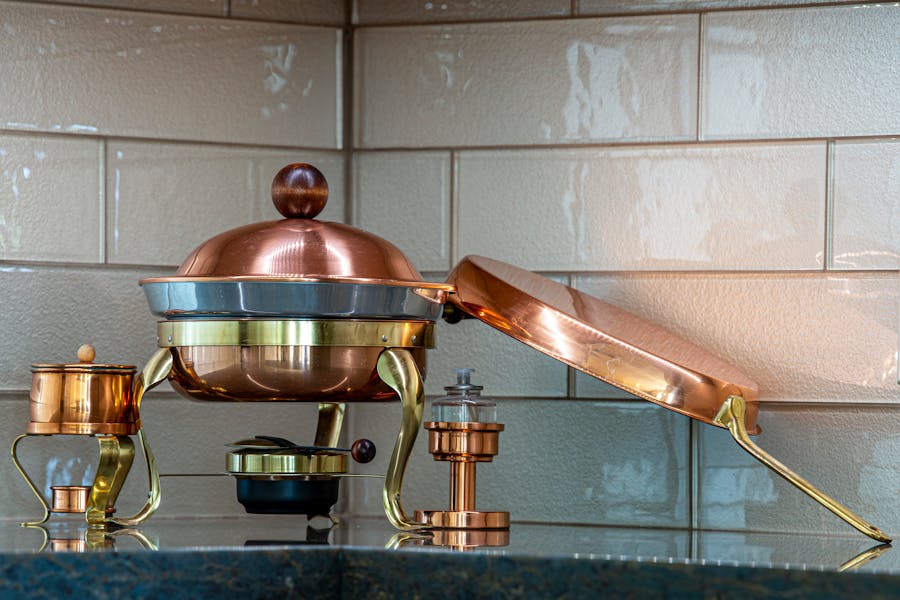KitchenAid has long been synonymous with quality and innovation in kitchen appliances, earning a reputation as a go-to brand for chefs and home cooks. However, amidst the buzz surrounding its products, a pertinent question arises: Is KitchenAid genuinely made in the USA? In this article, we delve into the intricacies of KitchenAid’s manufacturing process and explore the veracity of its “Made in the USA” claim. By examining the brand’s history, production practices, and consumer perceptions, we aim to uncover the truth behind KitchenAid’s origins and provide clarity for those seeking to make informed decisions about their kitchen investments.
Is KitchenAid Made In USA?
Some KitchenAid products are made in the USA, but not all. KitchenAid, a renowned kitchen appliance brand, has a long history of manufacturing high-quality products. While some of their appliances are indeed produced in the United States, it’s essential to note that not all KitchenAid products bear the “Made in the USA” label. The company operates manufacturing facilities in various locations globally, and some components may be sourced internationally. Therefore, when considering purchasing a KitchenAid appliance, it’s advisable to check the specific product’s origin and manufacturing details for clarity on its production location.
The Popularity Of KitchenAid
The popularity of KitchenAid is a testament to its enduring legacy of quality, innovation, and timeless design. Here’s why KitchenAid has become a household name and a favorite among chefs and home cooks alike:
Heritage and Trust: Since 1919, KitchenAid has established itself as a trusted brand known for reliability and performance. Its iconic stand mixers, recognizable by their sleek design and sturdy construction, have become a symbol of kitchen excellence.
Versatile Product Range: KitchenAid offers various kitchen appliances and accessories to cater to culinary needs. KitchenAid’s product lineup encompasses essential tools for professional chefs and passionate home cooks, from stand mixers and blenders to food processors and coffee makers.
Innovative Features: KitchenAid is synonymous with innovation, continually introducing new features and technologies to enhance the cooking experience. Whether it’s the patented planetary mixing action of their stand mixers or the precision control settings of their cooktops, KitchenAid appliances are designed to simplify tasks and deliver superior results.
Timeless Design: Beyond functionality, KitchenAid products are celebrated for their timeless design aesthetic. The brand’s classic color palette, including iconic shades like Empire Red and Onyx Black, adds a touch of elegance to any kitchen space. Additionally, KitchenAid offers limited-edition colors and customization options, allowing consumers to personalize their appliances to suit their style.
Community and Culture: KitchenAid has cultivated a vibrant community of enthusiasts, from professional chefs to passionate home bakers, who share a love for cooking and creativity. KitchenAid fosters camaraderie and inspiration among its loyal customers through cooking demonstrations, culinary workshops, and online forums.
Brand Recognition and Prestige: KitchenAid’s strong brand identity and reputation for quality have contributed to its widespread recognition and prestige in the culinary world. Whether featured in professional kitchens, television cooking shows, or home kitchens around the globe, KitchenAid appliances are synonymous with culinary excellence and craftsmanship.
The Manufacturing Process Of KitchenAid Appliances
The manufacturing process of KitchenAid appliances involves several intricate steps that ensure the production of high-quality and reliable kitchen products. Here’s a detailed overview:
Design and Development:
The process begins with extensive research and development to conceptualize or improve new products. KitchenAid’s team of engineers and designers collaborates to create innovative designs that meet consumers’ needs and preferences.
Sourcing of Materials:
The next step is to source the necessary materials and components once the design is finalized. KitchenAid carefully selects suppliers who provide high-quality materials such as stainless steel, plastic, glass, and electronic components. These materials are sourced domestically and internationally based on quality, availability, and cost considerations.
Manufacturing Components:
The sourced materials are then transformed into various components required for the appliance. This includes processes such as molding, stamping, casting, and machining. Each component undergoes rigorous quality control measures to ensure they meet KitchenAid’s standards for durability and performance.
Assembly:
Once all the components are ready, they are assembled for assembly. This stage involves skilled technicians who meticulously assemble the appliance according to the product specifications. Automated machinery may also be utilized for efficiency and consistency.
Quality Control:
KitchenAid implements stringent quality control procedures throughout the manufacturing process to detect defects or inconsistencies. This includes visual inspections, performance testing, and durability assessments. Products that do not meet the quality standards are rejected or reworked to ensure only the highest-quality appliances reach the market.
Packaging and Shipping:
After passing the quality control checks, the finished appliances are carefully packaged to protect them during transportation. KitchenAid uses eco-friendly packaging solutions whenever possible to minimize environmental impact. The products are then shipped to distribution centers and retailers worldwide.
Customer Support and Service:
KitchenAid prioritizes customer satisfaction by providing comprehensive appliance support and service. This includes warranties, troubleshooting guides, and customer service representatives to assist with inquiries or issues.
The Reality Of KitchenAid’s “Made in the USA” Claim
The reality of KitchenAid’s “Made in the USA” claim is nuanced and subject to scrutiny and interpretation. While KitchenAid proudly emphasizes its American heritage and manufacturing prowess, the complete picture reveals a more complex reality.
It’s indisputable that KitchenAid manufactures some of its appliances in the USA. The company operates several manufacturing facilities across the country, employing skilled workers and contributing to the local economy. These facilities produce a range of products, from stand mixers to blenders, bearing the coveted “Made in the USA” label.
However, KitchenAid’s supply chain extends beyond US borders. Like many multinational corporations, KitchenAid sources materials and components from various countries worldwide. While some parts may be manufactured domestically, others are sourced internationally. This global sourcing strategy allows KitchenAid to access specialized materials, reduce production costs, and maintain competitive consumer pricing.
The Federal Trade Commission (FTC) sets strict guidelines for companies using the “Made in the USA” label. According to FTC regulations, a product can only be labeled as “Made in the USA” if it is “all or virtually all” made in the United States. This means that significant portions of the product, including its parts and processing, must originate in the USA. While KitchenAid products may be assembled in the USA, some components may be sourced from overseas, raising questions about compliance with FTC guidelines.
KitchenAid has been somewhat transparent about its manufacturing practices, providing information about the origins of its products on its website and packaging. However, the level of detail provided may vary, leaving consumers to decipher the extent of domestic versus international production for each appliance.
Warping Up
KitchenAid’s enduring popularity is rooted in its quality, innovation, and timeless design legacy. With a versatile product range, innovative features, and a vibrant community, KitchenAid continues to inspire culinary creativity and elevate cooking experiences worldwide. As a trusted brand with a rich heritage, KitchenAid remains a favorite among chefs and home cooks alike, symbolizing excellence in the kitchen.
FAQ’s
Are KitchenAid attachments made in the USA?
Similar to KitchenAid appliances, the origin of KitchenAid attachments may vary. Some attachments may be manufactured in the USA, while others could be produced in different countries. Consumers purchasing attachments made in the USA should verify the product’s origin before buying.
Are KitchenAid products made in China?
While KitchenAid does have manufacturing facilities in various countries, including China, not all KitchenAid products are made in China. KitchenAid’s global supply chain means that products may be manufactured in different locations worldwide. Consumers should check the specific product’s origin for accurate information.
Are KitchenAid stand mixers made in the USA?
Some KitchenAid stand mixers are made in the USA, particularly those with the “Made in the USA” label. However, not all are manufactured domestically, so it’s essential to check the product details for clarity.











Leave a Reply